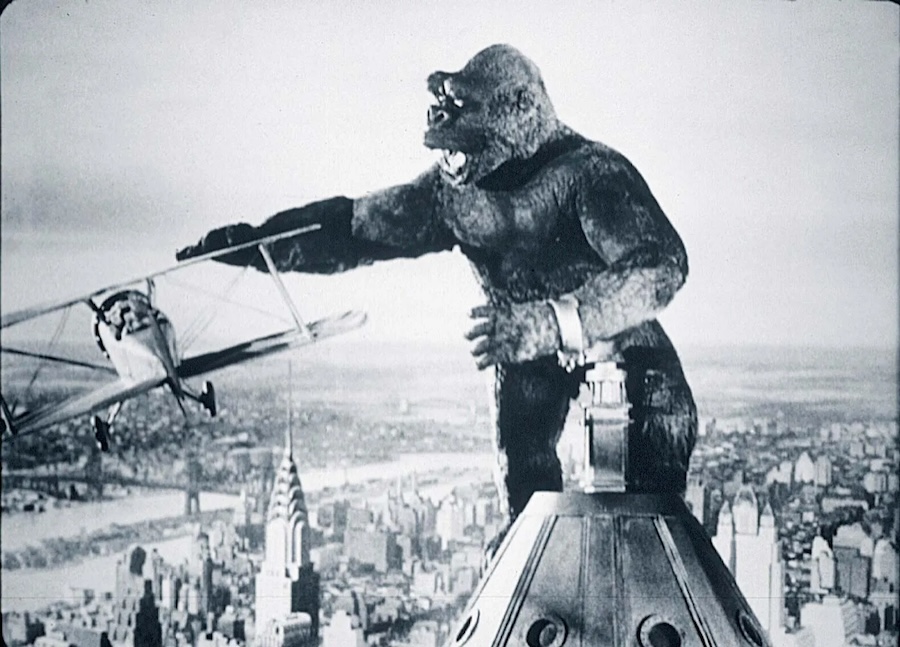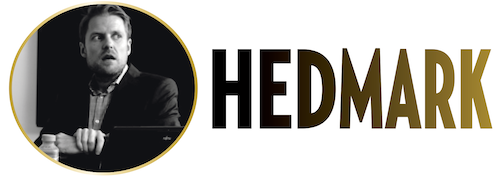
A MONSTER OF CREATION’S DAWN BREAKS LOOSE IN OUR WORLD TODAY!

The story that originally was titled ”The Eighth Wonder” began with Merian C. Cooper, who became fascinated with jungle adventures as a child. He subsequently served in World War I, visited several countries and did research for the American Geographical Society. He met Ernest B. Schoedsack in the early 1920s and traveled with him. Their journeys took them to Hollywood where Cooper helped a certain David Selznick find a job at RKO. Eventually, Selznick made sure that Cooper also ended up at RKO and many of the same cast and crew that worked on Schoedsack’s The Most Dangerous Game (1932) became attached to a little project of Cooper’s called King Kong.
Inspiring countless imitations, King Kong became a groundbreaking cinematic event.
Headed to Skull Island
Filmmaker Carl Denham (Robert Armstrong) is preparing for a new expedition that will be leaving New York City aboard a chartered ship. But he still needs a leading lady for his wildlife movie. He finds her in Ann Darrow (Fay Wray), a beautiful young woman who’s starving and agrees to join the expedition. After a few weeks out to sea, Denham informs the crew that the destination is Skull Island, a place rumored to harbor some kind of creature known as Kong. When the ship finally arrives, the crew finds a native village surrounded by an enormous wall. They become witness to a ceremony where the natives prepare to sacrifice a young woman to Kong…
Not an actors’ picture
Very well-paced, this film basically does what it took the Jurassic Park franchise two movies to do. The appeal of having a beautiful, scantily clad woman in jeopardy in the middle of the jungle was a no-brainer for everybody at the time, from Cooper to RKO to audiences. This movie made Wray a star and her iconic horror-movie scream is hard to rival. This isn’t really an actors’ picture; Wray stands out for sure, but none of her male co-stars are memorable, not even Armstrong as the ruthlessly ambitious Carl Denham.
The look of Kong himself is clever – this is a terrifyingly large creature with awesome powers, but his eyes are big and expressive, certain to make us feel for him.
The real star is obviously Kong himself, the giant ape. Several models of him and the other gigantic creatures of Skull Island were created for stop-motion animation; along with matte painting and rear projection, the technology was put to brilliant use by Willis O’Brien whose work on special effects revolutionized Hollywood. The most challenging part of it, the physical interaction between monster and man (especially when the action moves back to New York City), is handled convincingly, and the brutal battles between Kong and his ancient adversaries on the island, snakes and dinosaurs, are imaginative.
The look of Kong himself is clever – this is a terrifyingly large creature with awesome powers, but his eyes are big and expressive, certain to make us feel for him. Because ultimately this is a tragedy, with an iconic ending atop the Empire State Building, newly constructed at the time and the tallest building in the world. We end up caring more for Kong than Ann, which is quite an achievement.
This isn’t only a triumph when it comes to special effects. Before King Kong, the early days of talkies did not traditionally feature original music scores. Max Steiner was hired to simply find suitable music for the film, but Cooper reportedly paid him to write an original score. It was subsequently recorded by a full orchestra and the results impressed the studio enough to reimburse Cooper. The way Steiner wrote leitmotifs for the music changed Hollywood’s thinking; from now on, there would be original scores that emphasized emotions on screen. And this movie, even though its main protagonist is a big ape, suffers no shortage of emotions.
King Kong 1933-U.S. 104 min. B/W. Produced and directed by Merian C. Cooper, Ernest B. Schoedsack. Screenplay: James Creelman, Ruth Rose. Music: Max Steiner. Visual Effects: Willis O’Brien, and others. Cast: Fay Wray (Ann Darrow), Robert Armstrong (Carl Denham), Bruce Cabot (Jack Driscoll), Frank Reicher, Sam Hardy, Noble Johnson.
Trivia: Followed by The Son of Kong (1933). Remade as King Kong (1976) and King Kong (2005); the ape was also featured in Kong: Skull Island (2017).
Quote: “It wasn’t the airplanes. It was beauty killed the beast.” (Armstrong)
Last word: “King Kong was difficult only because of the hours we had to put in. At that time, there was no protection for actors about time or anything. We worked straight through for 22 hours once on Kong. It was really a wearying experience, because it was mechanics, really, as much as anything that we were dealing with. The technicality was transparency to transparency from the rear, and then re-photographing me in the foreground on the same level with that screen – so I couldn’t really see what was happening at all! It had to be done many, many times to confirm that it was okay.” (Wray, “Scarlet Street”)
